DI ONLINE






ThePhotographer: Steve Betts
TheImageTitle: Pontypridd
AbouttheImage:
The camera settings are 1/60th sec f16 iso 200. It is 3 exposures taken in camera with the multiple exposure mode set to lights. Colours are introduced by using different colours balance settings for each exposure. It is a composite of shots of the corrugated roof of the theatre in Pontypridd.
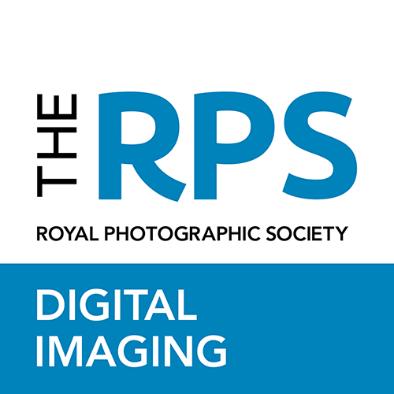
Editor DI ONLINE: Melanie Chalk
Contact: dionline@rps.org

Where is summer? Where are the butterflies and insects? What is happening to our world?
Perhaps as photographers we need to be capturing this change in our environment and documenting how it is in 2024 so that we have a stake in the ground for future reference. But how to demonstrate the lack of butterflies is a challenge - a buddleia bush without butterflies is simply a buddleia bush. So how can we record this? I do not consider this to be rhetorical question but one meant as a challenge to you all. Are we capable of documenting this change in some way. If you have the answer then do send us your images and in our next DI Online in September we will include the best examples of your images showing this change.
Email jpgs to digchair@rps.org
As I have already alluded DI Online takes a well earned rest in August but that doesn’t mean the DI volunteer team work stops. We have recently swelled our numbers with an amazing response to my request for new team members. We welcome each and every one of them and thank them for offering us some of their time to deliver new programmes and support for the benefit of our members.
We hope to shortly relaunch Accolade as a separate online publication. Where we have had to do just one a month within DI Online we will shortly be able to restart featuring many members Distinction success stories again.
We will also be announcing an LRPS Support Group. I have been reliably informed that LRPS Assessment bookings will open in August so I imagine there are many of you anxious to get going on your Distinction journey again. We will be here to support you and to help you through those times when you lack belief in your own work. Once the RPS staff team have got the criteria and new process documents online we will make a start.
Our very popular longer term projects of Books & Zines, or from Seed to Bloom, both continue with really strong and engaging programmes.
So plenty for each of you to engage with whatever your personal preferences.
Janet

During the latter part of 2023 and for the first half of 2024 DI has continued to evolve - to develop new programmes whilst holding fast to some key membership benefits. We now feel it is time to take stock of what we do and ask the members for their feedback so that we can be sure we are delivering what the members want.
To collect your thoughts and opinions we have put together a DI 2024 survey which we would be grateful for as many of you as possible to complete please. The data and comments from this will determine what we deliver in 2025, so do have your say in how your group evolves.
You will find that some sections of the survey are mandatory - these are where it really is vital for us to have the data. Other sections you elect to complete or not. However the more you complete the better our data will be, so we appeal to you to stick with us and complete everything you feel able to.
The survey will be live from when you receive this copy of DI Online till the end of August. Please don’t put this on the ‘to do’ pile and then forget it though.will you?
We thank you for your co-operation
I met Steve at a recent Workshop at Wisley, when he showed me his creative images on his phone. He said he and his friend were now compiling a presentation on how they create these colourful images, you might catch it at a club near you. When he was invited he was very happy to send me an article about his technique and share his images in this publication. What a wonderful, colourful explosion of creativity. Editor
About 18 months ago I started a project with a friend from my local camera club with the objective of producing a body of work based on multiple exposure and ICM. I had been dabbling with both techniques for a while and a project provided a real impetus to extend the techniques. I started using the more commonly known about techniques and was getting similar results to others working in the field. I was searching for something that made the difference and gave me a distinctive style. I attended a DI talk by Bill Ward and spent time looking at his work. One thing that came out of his talk was to vary camera settings between exposures and this catapulted me into a new direction that is distinctive and different from what most people are doing. I also spent time looking at images and reading about the work of Jonathan Vaines, a great inspiration for something different.

The first outing I made implementing my new ideas was to Southerndown on the Glamorgan coast where I spent the whole day just exploring variations in camera settings between successive exposures. An example of this is the beach shot. I have since spent a lot of time exploring how to use the camera to create different effects and am now using them to create particular looks and colours. Each shot can take a long time to achieve. I use the camera to vary the amount of each successive exposure which varies the amount of detail that is captured on each frame building the overall picture. Even then every shot is unique, I have tried recreating a few images and can't.... so now I just have to produce something new with every shot!
One thing that is important to me about this project is that all the pictures are generated in camera, and only tweaks like cropping, contrast, vibrance and simple tweaks that can be made in Lightroom, and take no longer than 1 minute to achieve. Photoshop is not used on any image! Its has been a very exciting and stimulating 18 months and the fascination for me hasn't waned, I only rarely take “ordinary” pictures now.
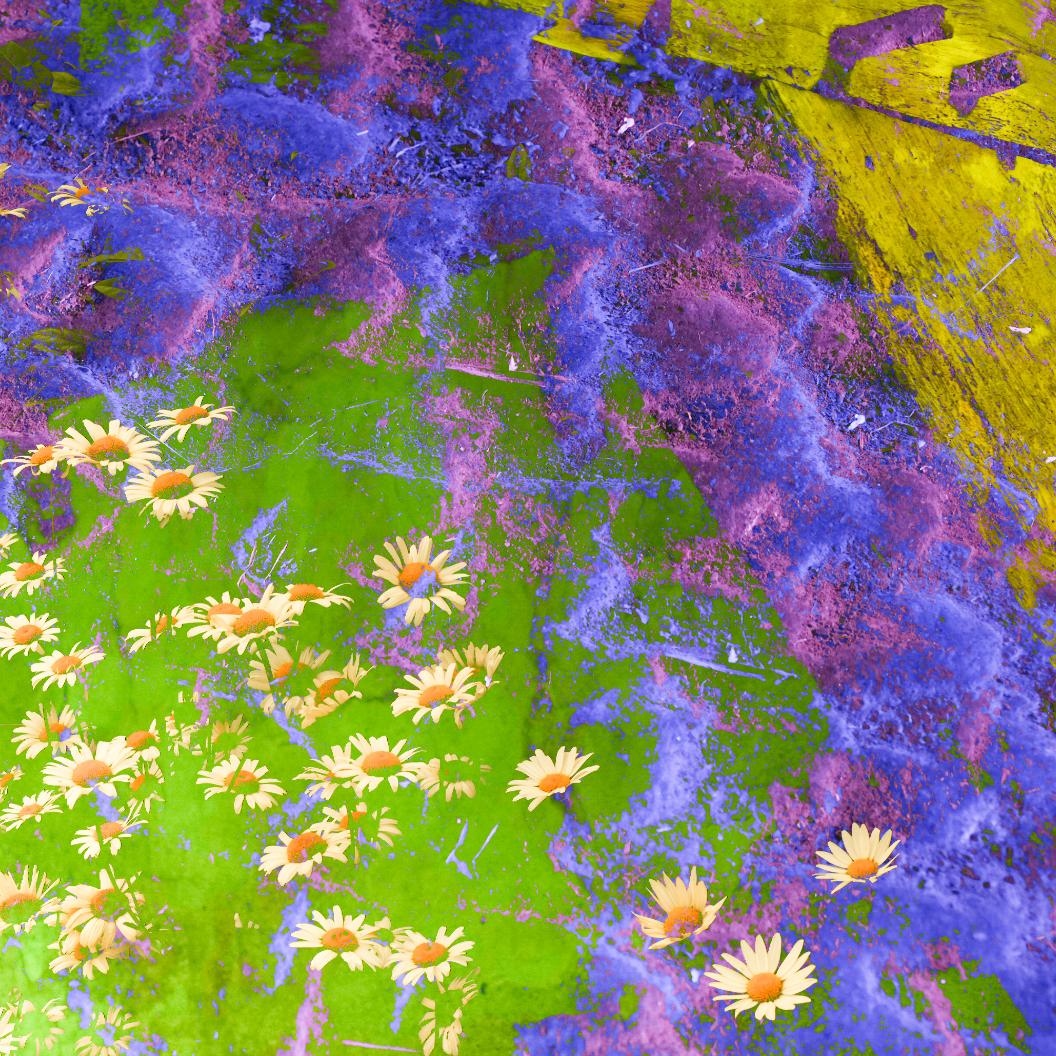



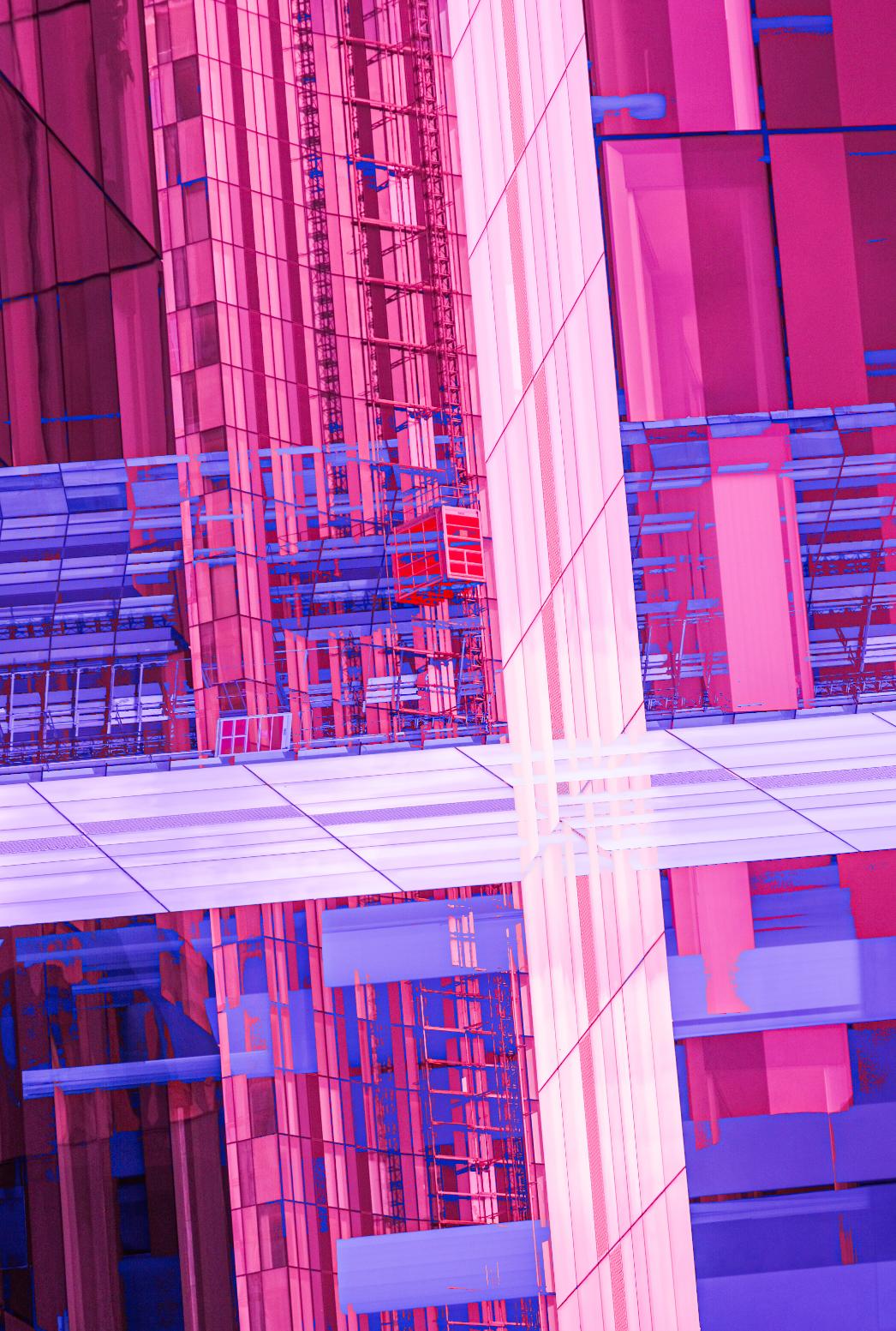
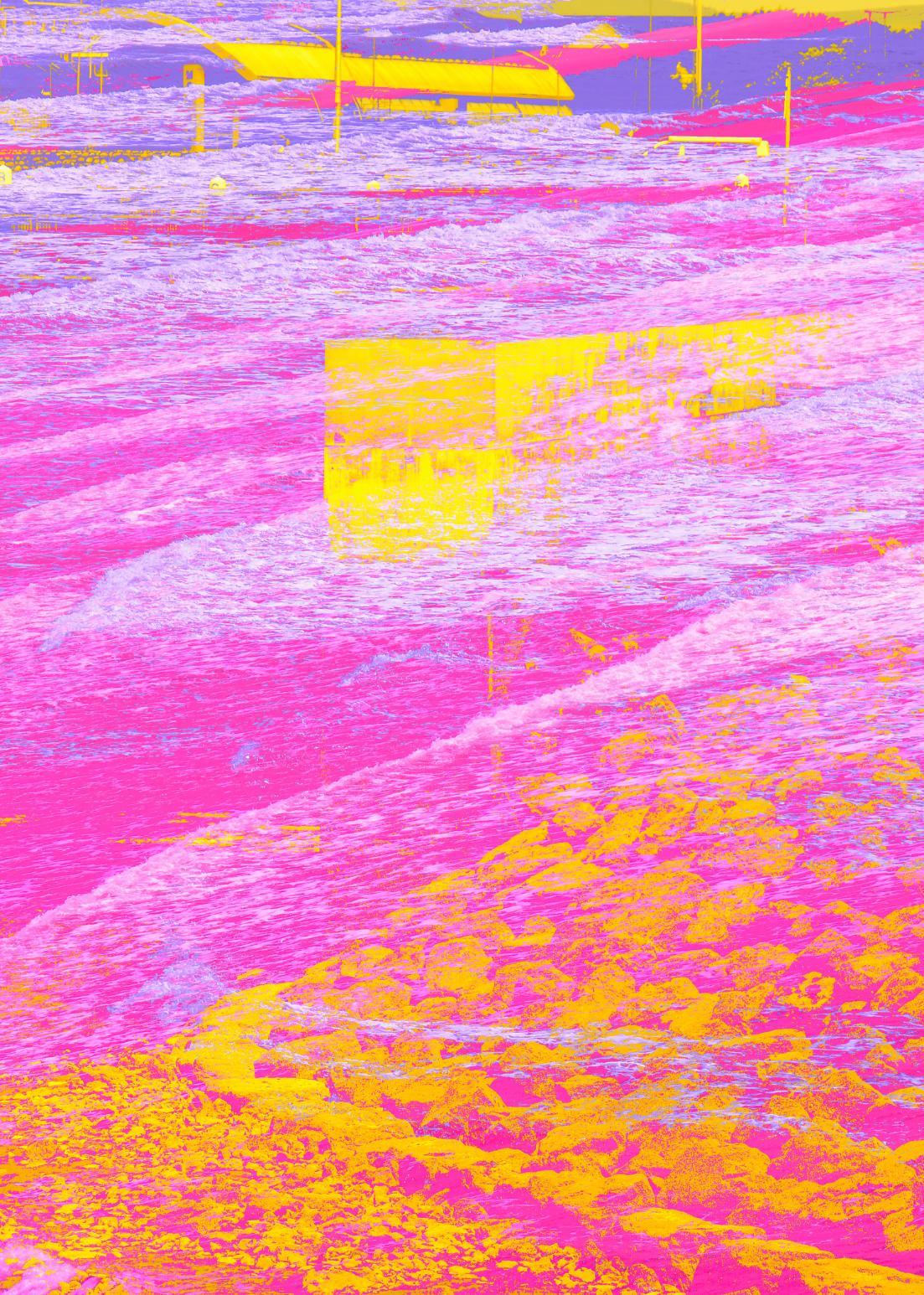
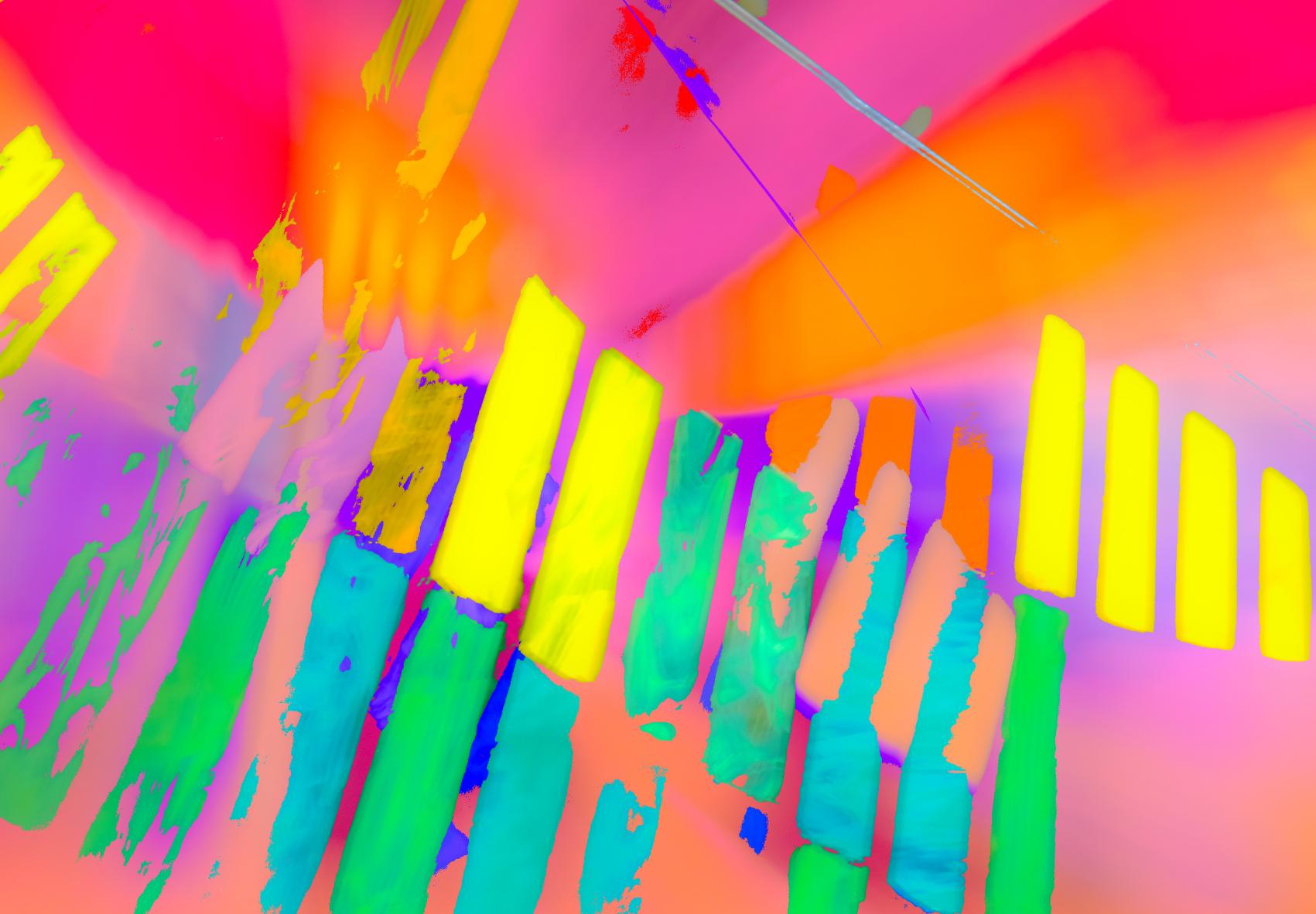




Here Jonathan Vaines explains the thinking behind the ‘Creative Development’ initiative DI Workshops have run for the first time this year. We initially aimed it a those people who had already attended Jonathan’s DI workshops in the past. The response was very positive and the pilot went ahead in late January. Below and over the following pages read about Jonathan’s initial thoughts and the very positive comments from some of the participants from each of the three groups. There are still some months to go but eventually their Creative Portfolios will be displayed in a Virtual Gallery.
• Could we repeat this in 2025?
• Are you interested in exploring and developing your creativity?
• Would you like to know more about joining liked minded people in a supportive group ?
If you inspired by what you have read, then do please just show interest by completing this Jotform. We can then arrange a Zoom chat with Jonathan to hear all about it, what’s involved and what the commitment would entail, before we ask you to sign up.
Jonathan’s Concept
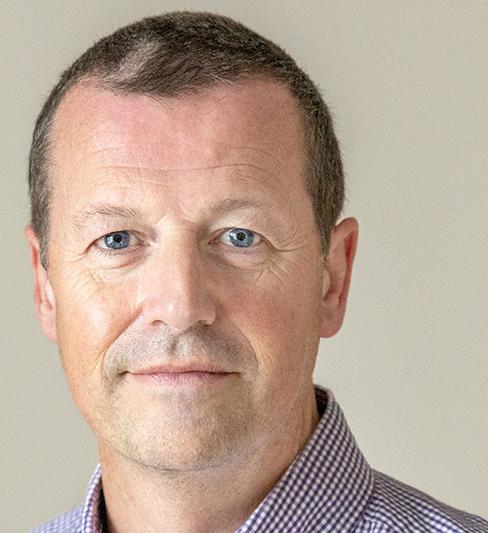
Quite a few years ago, people began to refer to my work as ‘Arty’ or ‘Painterly’. At that time, I also began to experiment and explore abstracts, looking at the world in a different way. I recall the digital imaging group referring to my work as ‘photography with a twist’. It was this remark that made me consider how I produce images, or should I say, it made me think of how I work differently to that of others and it is at these times that you discover not everyone thinks like you. Much of the work that I do starts with an idea and then the photograph follows.
My approach to creating work is to think about a subject and then ask myself how can I possibly portray that subject, emotion, feeling etc in a photograph?
In this one year long set of sessions I wanted to offer people space to think about their photography and how they can connect their vision, implement their ideas and produce meaningful work that communicates to the viewer. I will be the first to say that this development of creatively approaching photography is not easy but when it works the rewards are high.
Three groups started in January all with the same brief. They have all branched off, found their own direction and at this moment in time, just over the halfway point, are very different from each other.
The basis of the first year in this creative development project has been to open their minds to the subject before they photograph it. The discipline is to work in sets of images, not panels. Sets can be open to interpretation, for example, they can be connected by aspect colour, subject, photographed or post production style or a set, maybe a number of different images all on a theme.

In addition to four sets that we have worked on throughout the year, we have had several spot tasks that have challenged the delegates. First of these was to submit a single photograph based on the ‘Freedom’. It starts by understanding what freedom means to you, which we discovered was different for each person. Then how can that word, feeling, or emotion be captured in camera, in a way that isuccessfully communicates that to the viewer. Currently we are working together to make a large set of images using square format, all around the subject of carbon footprint. Some have focused on the current situation, the root problem, the near future and some on the solution.
The delegates were put in small groups which allowed them to communicate with fellow photographers in an open encouraging environment alongside others interested
exploring their creativity. I have run this format for five years, but this time with a group, the results are very different to working one-to-one. I have seen several people connect through creativity but not everyone has fulfilled every challenge with a final photograph. But it is is the method of thinking that is important with ones personal development in a creative world and having the freedom to show some nonconventional work has been welcomed by most.
We have just five months remaining and the groups are thinking of their own set subjects and starting their personal projects . With five other pieces of work to produce there is a workload – this is not workshop for snappers it’s an experience for people wanting to become creative thinkers.
BarbaraBrown–CreativeDevelopmentParticipant
As part of the Creative Development Programme, we were tasked with producing a single image that epitomises Carbon Footprint. As an environmental physicist in a previous life, this is a topic dear to my heart. My initial idea was a multiple exposure of a simple power switch; something that we take for granted without thinking about the environmental consequences of power generation.
Then I remembered the scale of man’s carbon footprint can be seen everywhere, and no more so than from the air. Aerial photography shows a perspective typically hidden from view. My image –Dragon’s Breath – reveals the colours, textures and patterns formed within a residue pond of a coal-fired power station in the south west of Western Australia.

The image is both beautiful and disturbing at the same time. When processing the image, I deliberately emphasised the vivid colours to give the image the “wow” factor to draw the viewer’s eye. Also, leaving the blue pipe in the image (I did think of removing it) gives perspective to the scale of the contaminated area. As a photographer, I am moving towards more interpretational abstract imagery, a genre which brings its own challenges. In my experience reaching a consensus on what makes a good abstract image is difficult. Being in a group of like-minded photographers, who are all on a path which diverts from main stream photography is exhilarating. Comments from judges who struggle with the concept of abstract images are beginning to carry less weight for me and I trust in my gut feel more. Having creative projects brings out my creative juices. There is no right or wrong image, no good or bad image, just the fun of playing!! I plan to create a book of the sets and individual creative images produced over the course of the programme which will reflect how I view the world and my creative journey over 2024.
JanieChapman–CreativeDevelopmentParticipant
Each image represents a moment in time, 2.00 seconds to be more precise. Taken on a foggy and drizzly February day, the high tide was bouncing and bending against the harbour wall in Porthleven, Cornwall. I was entranced watching the wave patterns forming and breaking and was reminded of the 18thc Romantic Movement and the “concept of the sublime” to describe the veneration of nature’s strength, power and beauty. I was both awe-struck and intimidated in equal measure. The images are part of a set of eight taken for the RPS Creative Development Programme assignment of SCAPES.
I am very pleased to be a part of the first RPS Creative Development Programme and am enjoying the learning and stimulation. However, it did take me a while to get used to this newfangled concept of selfdirected learning. I’m a bit of a traditionalist at heart.
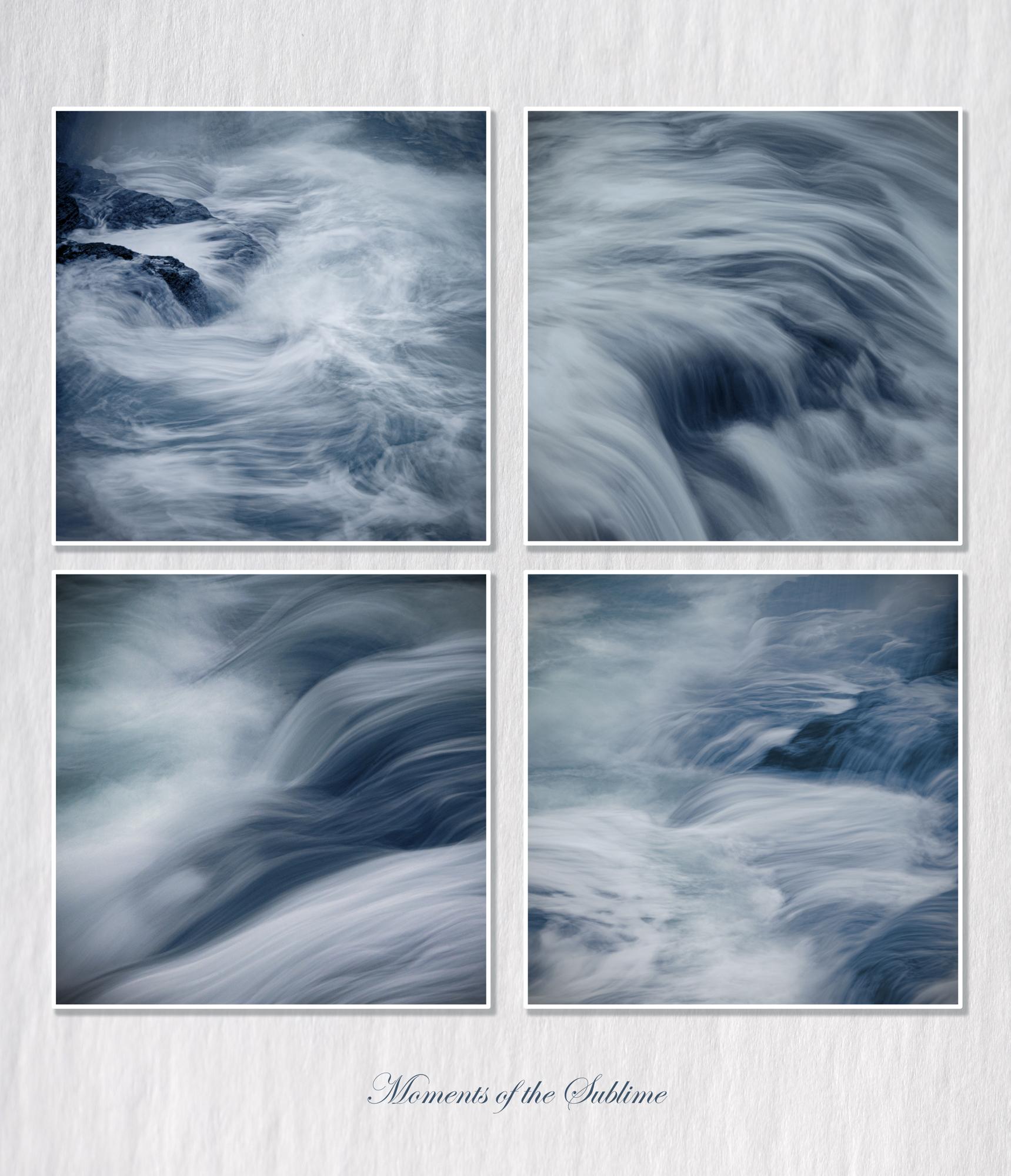
For me the biggest challenge is to learn to think in sets of images rather than single images. I had just worked up to doing triptychs but now I need to think in sets of 6-8 at a time. For me this means not only taking many more images, but before capture, thinking about an appropriate set and the possible placement of an image in that set. This adds many layers of complexity to the art of photography. But I can embrace that. I hope that this can one day bring me a successful RPS Associate Panel.

I was thrilled when I learned there was to be a new RPS group that focused on creative aspects of image making. This would be an opportunity to reboot my photography, leaving behind the boring landscapes of which I had so many, as well as all of those early mornings waiting for a golden hour that would never come. The Creative Development Group has, in fact, already achieved for me what I had hoped. The group’s emphasis on project based image making has enabled me to explore each subject using a variety of approaches and styles and I’ve learned a lot from the many, more experienced, photographers in the group. Styles range from realistic through ICM/ME to completely abstract. I may have found the answer to the question “is it a beautiful, evocative abstract image or just a Photoshop mess” – in reality you just know. At the mid-way point we still have two projects to go with the subjects being chosen by the group or individually and I’m anticipating further developing my own style.
The photographs above were taken for the first project, which was Scapes. I enjoy using relighting and reshaping methods to change an image of something very ordinary to something more puzzling, dramatic or just out of place. This image is of an apartment block in Leicester and it has been reshaped into a set of pictures that are quite caricatured and nautical. I have found this can be a great method to increase flexibility in image making and to see the possibilities that can emerge.
LauraDrury–CreativeDevelopmentParticipant
Portraying the carbon footprint issue in just one image was quite a challenge. It’s a huge and scary subject but I concentrated on my frustration that world leaders are doing so little to stop the catastrophic damage we are doing to our planet. The intention behind my image is to show our centre of government in their own little world looking out at blue skies when the world around is clearly in danger. Global warming and rising sea levels are obvious and closing in on them but successive governments still just look at the blue sky from their windows and do nothing.
In the top section, raging seas are about to engulf London, whilst the heat of the fire in the bottom part of the picture is spreading and starting to impact the population. Around the edges, dead foliage speaks of the damage already done.
Being part of the Creative Development Group has certainly pushed me creatively. It’s not always about making a statement with our images but it is about creating art not just photographs. We’ve been challenged to portray feelings and sensations in our work as well as something aesthetically pleasing. Although I’ve learnt new techniques in Photoshop and Lightroom, the main thing I’ve learnt so far is to spend more time thinking about my images before I pick up my camera and start taking pictures.

PatCouder–CreativeDevelopmentParticipant

My image is a blend of three photographsCooling towers and a tree both taken in Shropshire plus a texture from my stock files. I create my own textures using a variety of mediums, paint, inks or printing using a gel press. I enjoy this process just as much as using them in my images. The cooling towers represent industry and the smoke from the chimney polluting the air. The tree has no green leaves, its pale & unhealthy. The blend mode used on the texture layer was Difference. Its not a blend mode I routinely go to as it dramatically changes the image by looking at colour. The cooling towers have taken on the texture layer whilst the light sky has changed to a dark blue and the tree to white.
I have considered myself a creative photographer, enjoying in-camera techniques and all that Photoshop has to offer but despite being successful in my local camera clubs, I wasn't getting that “buzz” so when the course with Jonathan came up for a years worth of creative development I immediately signed up! Producing sets of images with a creative mindset and really throwing out that rule book has been liberating. My sets so far are unfinished needing some more thought as I want to push myself and not create hackneyed images. The Whatsapp Group we are in has been great - a source of inspiration when my mind goes blank, showing our work without fear and having others opinions on images has been invaluable.
For the Movement theme I took a lot of photos of the fountain in Cambridge Botanical Garden. I used a slow shutter speed and some photos had a subtle bit of ICM. I got some useful feedback on the first set I posted in the group, my photos were on the dark side, some had too much black background and the more ethereal shots were preferred. My initial processing had been in lightroom using a cool look and desaturating any background colours. For the second set I lightened the shadows then took the photo into Nik7 Analog and used the double exposure feature to emphasise the movement and enhance the ethereal effect. Using the zoom and rotation with the second exposure has the benefit of keeping a central area relatively sharp while blurring the outer areas. Although we are only asked to produce sets rather than panels its hard not to arrange them more like a panel, old habits die hard.

I have found the group works well together and provides useful ideas and feedback on WhatsApp. In my personal photography I am moving from competition orientated photography to a more creative style so this workshop came along at the right time, the challenges are stretching me and being run over a year means many ideas can be tried without too much pressure.
LorraineGreyCreativeDevelopmentParticipant
Why did I sign up to the Creative Development or as I saw it Creative Challenge? It was a very daunting thing to do for me as my mantra has always been ‘I am not in the least creative’
I have never been able to draw, paint, sew or create anything arty in the whole of my life. I found photography a few years ago, well more like 20 years ago, and as time went on I started to play in Photoshop which led to a few whacky images that I liked but not shared anywhere.
Laura

Working in a small group since January has worked well as we are all more or less in the same boat and as usual we are all at different levels and have different ideas. Working together and talking through ideas has helped to encourage all of us to experiment more. The whole group has certainly developed a more creative outlook. The one thing that has changed for me is I now look to make sets/panels out of my work. Slowly I am understanding the reason to why it is better to work in projects even if they are only mini projects.
I am sharing some of my images and for the future I hope our group stays connected and we keep pushing the ideas and projects. People used to tell me that the only one stopping me being creative was me and I now know how right they were.
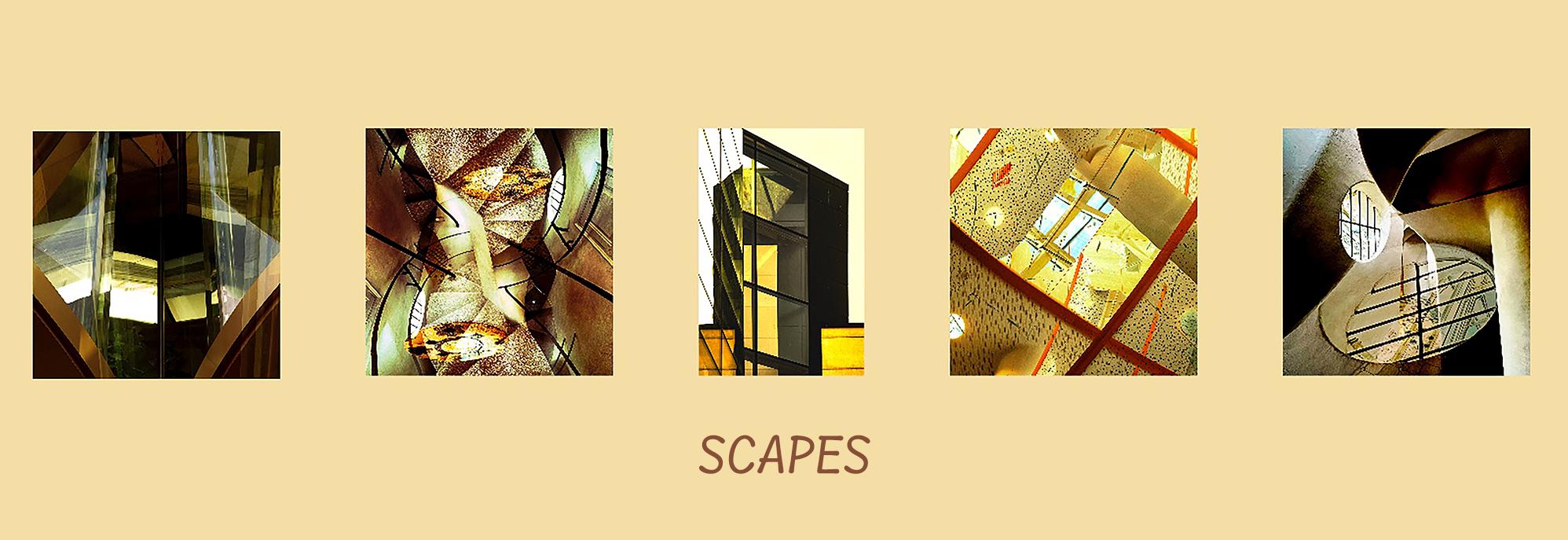
I have had the pleasure of being co-ordinator for one of the DIG e-critique circles since September 2022 during which time I have not only been inspired by the many varied images the group members have shared, but also learnt new techniques and enjoyed many interesting discussions
We have an incredibly talented group with such diverse interests, all are prepared to share knowledge and thoughts when asked, or simply enjoy and appreciate the images shared. We have been introduced to new techniques, infrared photography, creativity in photoshop, light spectrum distortion, unique staircases, various wildlife and bizarre mannequins to name a few of the topics shared and discussed.
Our meetings are always enjoyable and often humorous, the format may vary slightly each month with sometimes a theme agreed (for those who enjoy a challenge) or sharing a new photographic technique, a project or outing, or details of a photographer who has inspired us. Of course if someone has some images or a project they would particularly like specific advice and feedback on then that is our priority.
Before sharing our images (via Zoom share screen) we will give a brief introduction and background, including intention or purpose, maybe what drew our eye in the first place or what we enjoy about the image. We may invite specific feedback or suggestions on crop, distractions, composition, colour or mono or just share to initiate discussion.
We have a very supportive and convivial group of nine members, with five of the original members from when the group started in 2022 still members and regularly attending our monthly meetings. Whilst we may all have had varied expectations and reasons for joining the group, there is no doubt that we all enjoy our meetings and benefit from the discussions and experience.
Members have been happy to share their thoughts:
‘Its great to meet up with other like minded photographers at our monthly meetings. Our meetings are friendly and it’sgood to have the time to chat about each others photography. Any advice orcritique is constructive and it's really useful to hear other members thoughts about the images shown. Everyone in the group has varied interests and different styles of photography, I enjoy seeing their images and find many of them very inspiring.’
‘I have found that sharing my images and being able to ask the groups thoughts and ideas about whether an image works and how they would edit is really useful. It also works the other way, seeing how others take images and their thought process for editing gives me food for thought and ideas to try.’
‘For me, the meetings are an opportunity to regularly test my new pictures on an audience that I trust and within a setting of constructive discussion…….they are much more enjoyable than a score from camera club judging. The prompt to attempt something different or change your method is for me the main outcome of the Critique group.
I am having fun in excellent company.’
‘I think the group works well, perhaps the difference between our critique group and the processing group is that we don't normally suggest changes just for the sake of it.’
Another member mentioned he likes the group as it provides an outlet for sharing his pictures outside of competitions,particularly Camera Club competitions which he has moved away from.
Some examples of images shared and discussed:
"Before" and "After" image shared by John: The group suggested that I remove the light over door and the double yellow lines, and that that I should darken the drain pipe.


Melanie introduced us to a new technique which intrigued us all. Trevor was quick to give it a go and share the result with us.
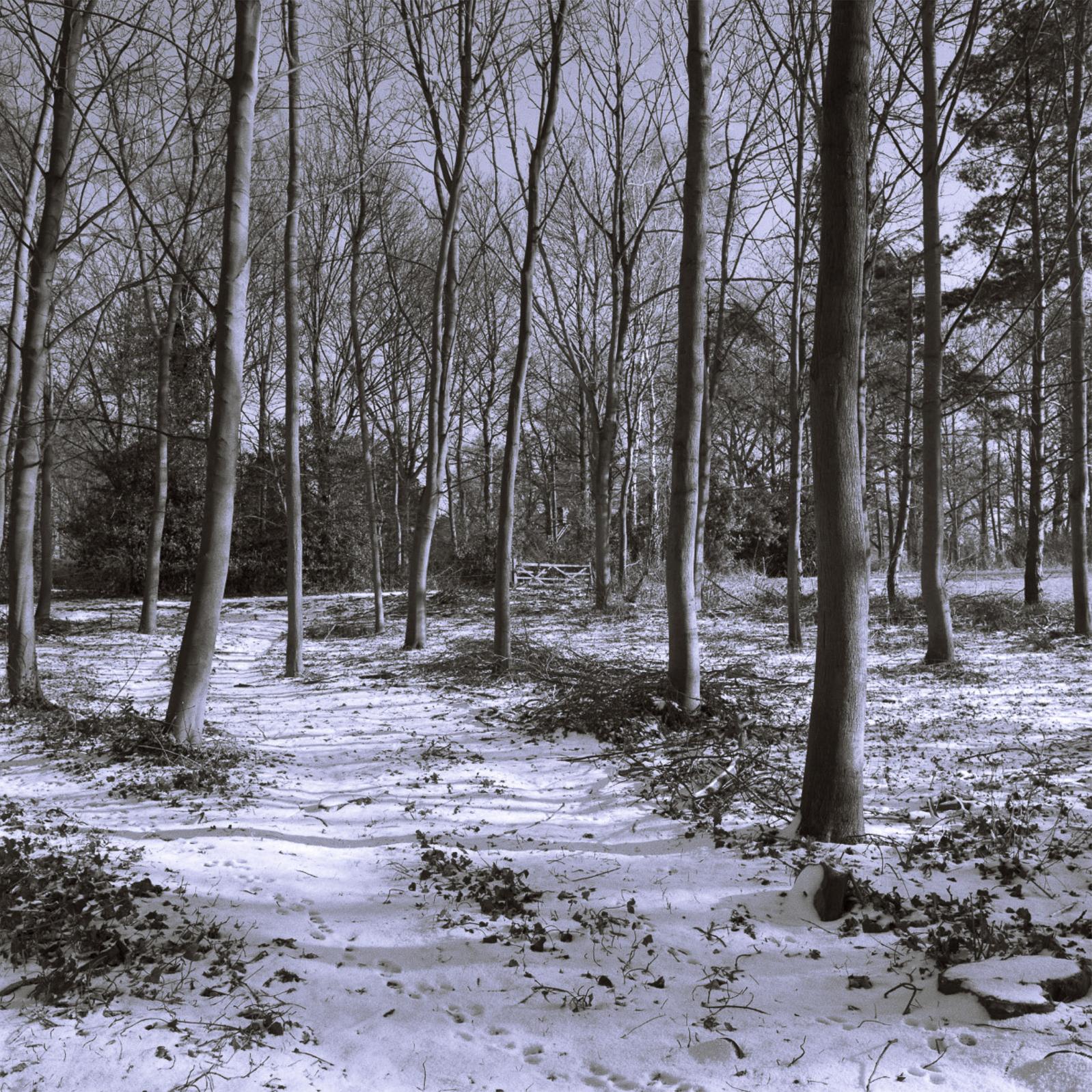

Before and after shared by Suzy: ‘They were only minor changes but I think they did make a difference’.
Tulip Staircase - “I was inspired to take this after I had seen many different compositions and colour images of this staircase. I had it in my mind that it would work well in black and white and that I could take at a different angle. During an e-Circle meeting another member said try and remove the white window reflection as it was a little distracting”.
Resting at Greenwich - “I was attracted to the columns and how the sun was shining in from the left. I chose a low viewpoint and when processing I decided that it worked well in back and white as it enhanced the image. A member of the group suggested I crop up a little from the bottom as there was too much space below”.




Discussion - breaking the “Rules of Composition” - a ‘marmite’ image.
This was an image which I shared for discussion which happily breaks many of the so called ‘Rules’, particularly with the ball almost out of frame. Whilst contentious in a traditional club competition, the consensus was that the ball on the edge of the frame added to the image, creating a ‘tension’ which all the group felt would be lost by having the ball strategically placed on the third.



Round 6 of the annual Digital Imaging
Competition is the culmination of the 5 winners from rounds 1-5 in a head to head.
From the 25 round winners only one will walk away with the beautiful Raymond Wallace Thompson glass trophy. .
Why not join us for the final selection and the online AWARDS ceremony.
2 August at 16.00 BST
Book now https://bit.ly/RPSDI-Final24
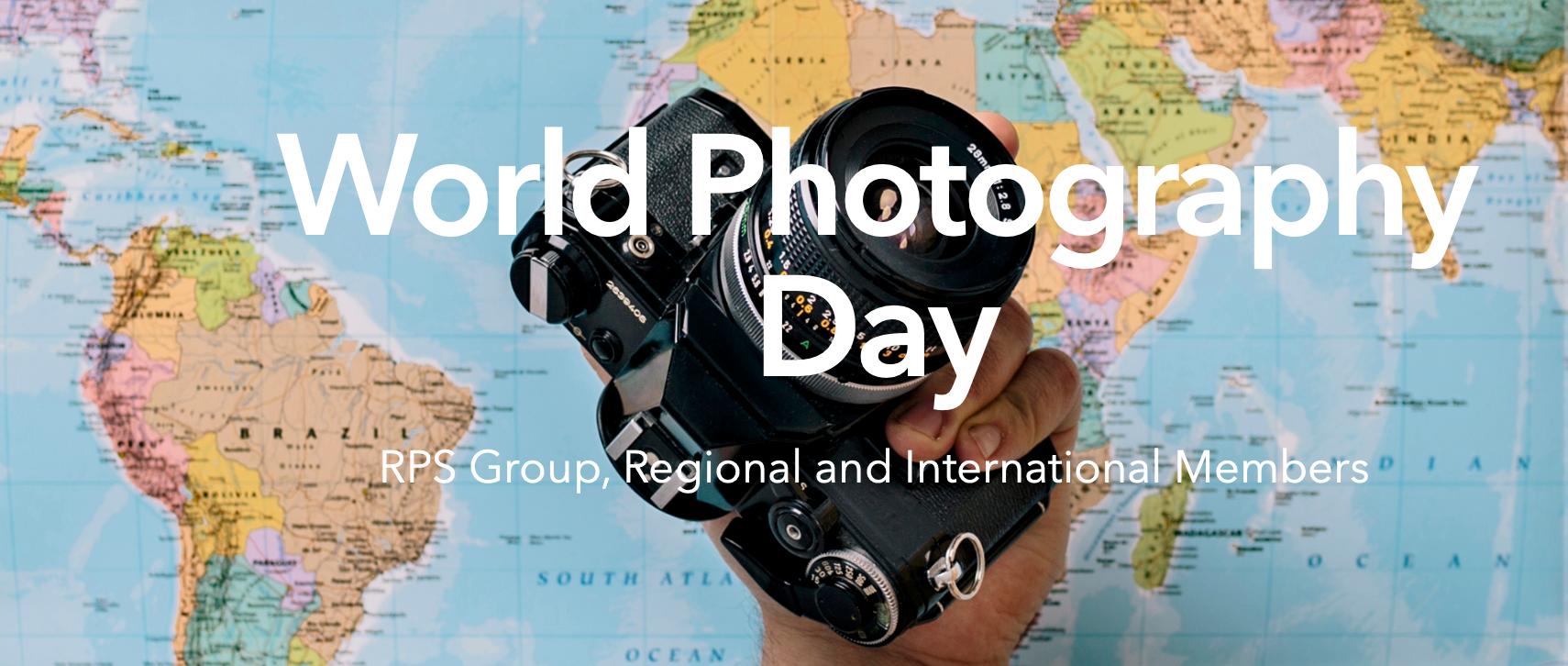
Call out to all RPS Group, Regional and International memberslet's come together to appreciate art, craft, science, and history of Photography on World Photography Day on Monday 19th August 2024. We welcome you to share your photography with the RPS community, contributing to a meaningful and enriching celebration.
• RPS Members may submit a series of up to 5 images.
• Before submitting, please resize your images to 2000px wide
• Add the title of your Image Series, not the individual image titles.
• Add a description about your Series max 100 words. (optional)
• Remember to include your RPS Distinction with your name.
We will send out a further email to you all nearer the date with the link to upload your images.
The next project is underway and this time we are focussing our cameras on WOODLANDS

• 50+ organised walks around the UK
• for those living on UK islands or are international members we are offering a slightly different format.
• You will receive an email in early August
• Non RPS members welcomed - a small charge per walk
• Bookings open August 19th
www.talkwalktalk.org
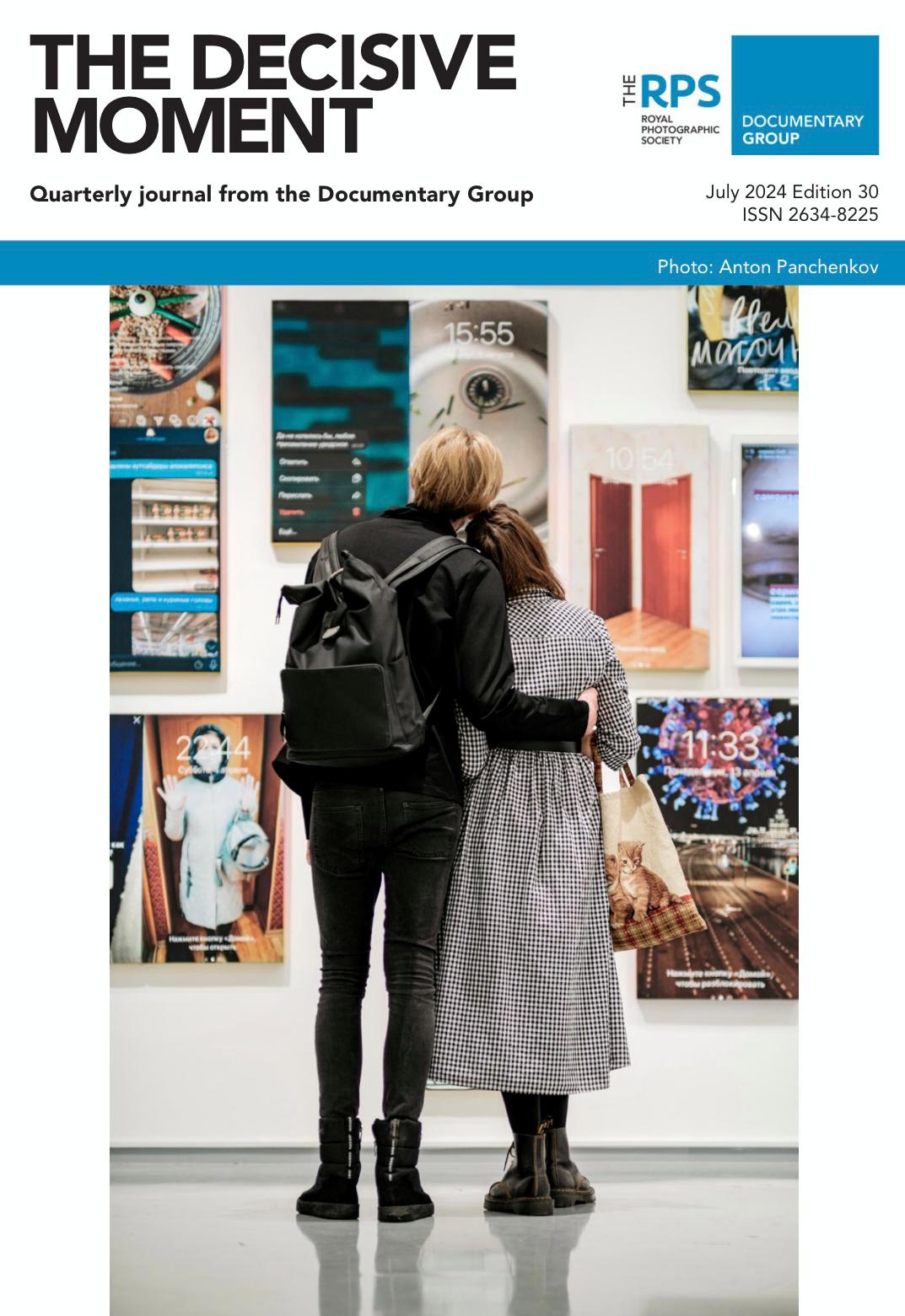
This has been posted on Facebook by Nick Hodgson FRPS Editor – The Decisive Moment by the RPS Documentary Group, but you might have missed it.
“The latest edition of The Decisive Moment has now been published and is available at the following link and via the Documentary Group section of the RPS website. Or on ISSUU
In this bumper issue we address important matters around the process and common pitfalls of the distinctions process for both Associate and Fellowship submissions, in which Simon Leach FRPS, Chair of the Distinctions Panel for the documentary genre, chats with Mark Phillips FRPS who chairs the Documentary Group.
Mark also interviews Roland Ramanan on his Dominoes project. We also feature the recent successful submission on Masham Sheep Fair by Sara Cremer ARPS; the candid gallery photography project Rara Avis by Documentary Group member Anton Panchenkov; and our recent Documentary Awards exhibition launch in London.
The RPS AV Group have asked us to raise awareness of this forthcoming international event.
The 23rd National Audio Visual Championship (NAVC) is looking forward to receiving entries and attendance bookings for this upcoming event. We hope to see as many of you as possible for a wonderful weekend of AV Excellence. Face to face events are so rare these days do please come along if you can.
TheRPSNationalAudioVisualChampionship2024 MalcolmImhoffFRPSFACI(M)AV-EFIAP
IamprivilegedtobeamemberoftheOrganisingCommitteealongwith KeithWatson,andAlastairTaylor,"theBoss",andwethreeorganisedthe highlysuccessful2022Championship.Thisyearwehavethebeneåtoftwo newcommitteemembers,AdrianBattersbyandMikePill,whobringfresh ideastothetable.AsaCommitteeIhavetosaythatweareallofonemindin championingthecauseof"realAV",i.e.seeingourworkonthebigscreen,in highdeånition,withtopqualitysound,and,mostimportantly,inthecompany ofaliveaudience,ourAVfriendsfromalloverthecountry. ItisverymuchasocialeventaswellasanAVevent. Welookforwardto meetingup,sharingourexperiences,andtalkingaboutthesequenceswe haveseen.Aswewatch,weareawareofthereactionofourfellowaudience members,somethingthatyoudon'tgetonZoom.Thisisespeciallytruefor anyAVwithanyemotion,humourinparticular,whichfallsýatwithno audiencereaction.

Please join us on the 28th and 29th September 2024.
All the details to enter and attend are shown below.
To enter the NAVC, follow these links:
NAVC Rules (click here)
NAVC Entry Form (click here)
To attend the NAVC, follow these links
Booking Form for Attendees (click here)
NEW in 2024 On line attendance booking and card payments (click)
Landscape SIG Member-Led Events: 3 new launches and others with spaces left.
Monsal Head, Derbyshire, on 25thSeptember, led by Dave Glenn.
Monsal Head is on the Monsal Trail walking route in the Peak District; we take in the most photogenic parts of the trail. These include: the Headstone Viaduct (see photo); two old railwaytunnels; a couple of weirs and a lot of scenery in between. The walk is 5-6 km (3-4 miles). Start is at 10:30, so may suit those from further afield. Click here to book
High Tide at Tollesbury, Essex, on 18th October, led by Mike Murphy.
A walk around Tollesbury Marina and salt marshes in Essex featuring many old boats, a lightship and “petrified” trees. Our visit to is timed to take advantage of one of the highest tides of the month offering a range of photo opportunities around both the marina and salt marshes. Click here to book.
Eglwyseg Rocks in Autumn on 25th October. Geraint Jones LRPS
Starting the day photographing the River Dee at Llangollen, we relocate a short distance to walk along the Offa’s Dyke Footpath under the limestone escarpment of the Eglwyseg Rocks which will give us views of the valley below. If time and weather allows, we may visit Velvet Hill with views over to Valley Crucis Abbey. The 09:30 start and good connections to Llangollen might suit some from further afield. Click here to book.



Taken in my garden when the afternoon sun was coming through the fence and backlighting the ferns. The image is a combination of separate elements combined in Photoshop with added textures. A small spider was hanging from the open frond, but it was really too tiny, so I used another shot I’d taken earlier of two spiders hanging from a web to provide the focal point. I added a background texture of bare branches of a willow tree. Colours were tweaked in post processing.
I was thrilled to hear that my image was awarded Highly Commended in the Macro Art section of this year’s International Garden Photographer of the Year competition .
Check out all the Winners HERE


Canon announced their new flagship camera – the EOS R1 recently. It will be chock full of AI capabilities – all kinds of autofocus modes, 40 frames per second, blazingly fast write speeds, tracking subjects even through interruptions using predictive AI. You can even programme faces into it – the famous players on the pitch or the bride and groom will now always be in focus! It even has the seemingly magical pre-shot technology that Olympus has had for a while now. This gives you up to 20 frames before you press the shutter –how can that work you ask? Is the camera psychic?
Well in this mode the camera is continuously shooting – effectively turning into a video camera (and also eating up battery at a prodigious rate). The sensor is recording the scene continually, and when you decide to capture a frame, it just rolls back 20 frames and gives you all the previous ones as well.
Cheating? Or just using available tech to give you the best chance of the “right” shot?
It really depends on what your point of view is. For a pro sports photographer (which is really where this beast is aimed) the difference between the money shot and the also-rans pays the mortgage. For amateur club photogs it might just be the difference between an 18 and a 20 in the next club competition.
But the building in of even more AI to camera bodies is a clear sign of things to come. And for those who can afford it, the ability to capture “better” images in-camera is clearly going to advantage those who can afford the expensive bells and whistles.
Will competition rules be able to differentiate? Almost certainly not. And so the gap widens further between the semi-pros and the amateurs, often competing in the same competitions.
For those of us who can’t drop thousands on a flagship camera body, this might help narrow the gap somewhat - the Arsenal 2. This is the latest iteration of a little box that sits on top of your camera in the flash hotshoe, providing advanced tech to assist in creating shots you might not otherwise be able to capture. Their website is at https://witharsenal.com/ . So what does it do? Well quite a lot. Trained on thousands of images and using neural mapping to scan the scene in the viewfinder, Arsenal can adjust your camera settings to provide optimal exposures in all the following ways:
• Determines optimal camera settings for any scene
• Fine-tunes settings based on the shooting environment
• Produces custom adjustments for each photo
• Live Panorama: Simplifies panoramic shooting
• Night Assist: Facilitates astrophotography with easy star focusing
• Crowd Control: Automatically removes people and moving objects from shots
• Focus Stacking: Ensures sharp focus throughout the entire scene
• HDR (High Dynamic Range): Automates photo stacking for challenging lighting conditions
• Long Exposure: Combines multiple photos for sharp long exposures
It’s a magic little box of tricks, but it’s still a box. Your creative vision for the scene might not accord with what Arsenal thinks are the “best” settings, so as with all this amazing tech, there’s still the need for some human intervention, unless you just want to hand everything over to the AI.

I bought the Arsenal 1 when it was a kickstarter project a few years ago, but it soon found it’s way to the back of my gadget cupboard as it tended to have problems making a connection with my camera. This tech has vastly improved recently so I’d not expect this to be an issue with modern cameras or the new version, which is also 5 times faster than the first one. So if you have $299 available, this might be an early Christmas present – they’re on back-order until Oct.as I write this in mid-June.
I had a student ask me recently “Why would I want to use full manual when Aperture priority makes it easy?”. I went through the usefulness of knowing about the relationship between Aperture, shutter speed and ISO but he wasn’t having any of it – he just wanted to get “the shot”. Maybe I’m getting old, but I really enjoy the thought process of deciding what combination of settings best will help me render the scene I’m looking at in the way I want. The learning curve, building experience and muscle memory – these are all wonderful learning journeys that many people seem to want to bypass for the immediate gratification of an instant pic, pushed straight to social media.
And so my inner conflict continues – the eternal techie nerd fascinated by all the AI possibilities, but also the slower, more contemplative photographer, happy to take my time and enjoy the craft. Are the two at odds? What do you think?
All back copies of Accolade can be found HERE. Production of Accolade is currently suspended but we hope to be able to resume full production later in 2024

I had been aware of the LRPS distinction for a number of years and it was something that was on my list of “things to do”. Nevertheless, it all happened rather more quickly than anticipated.
At a Worcestershire Camera Club meeting in December 2023, it was suggested that some of us could work together to achieve an RPS distinction. The idea was to develop our individual panels and review them as a group every few weeks. A problem then arose in January when I learnt the last print submissions would be assessed in March 2024. This wasn’t what I wanted to hear having just bought a new printer! However, I was encouraged to apply but I would have to work quickly; my final submission date was 5th March.
A review of the example panels on the RPS website and Accolade gave me some ideas. Symmetry about the vertical centre line and clear points of interest were common features.
The majority of my Lightroom library consists of nature, sport and aircraft photography, so this is where I started. Fortunately, these subjects enabled me to meet many of the LRPS criteria, including using different focal lengths and different shutter speeds. My main challenge was to choose complementary pairs of photographs which avoided repetition and created a balanced panel - not as easy as it sounds!
I was advised to book a one2one meeting before submitting my panel and I would also recommend this. The Zoom meeting with Viveca Koh was invaluable. I was very grateful to her for the comments and suggestions about individual images together with our discussion about different panel configurations.
Having met the deadline, I decided to attend the assessment in Bristol and was obviously delighted to have succeeded. My thanks to everyone who encouraged me and offered their advice.

If I had to pick one image I would choose the small skipper. The final image is a composite of four frames from a burst of ten which were taken hand held. Although the in-camera stacking worked well, it wasn’t perfect. Helicon Focus had been recommended to me and using this gave me the degree of control needed to optimise the stacking process. Although the composition is very simple, it is the level of detail in the final image that pleased me compared to any single frame image. It is possible to differentiate every hair on the butterfly’s body! I learnt a lot by processing this image and I am now following up with other subjects.

My “Driving To The Bucket” image had been a constant presence in the development stages of my panel but was ultimately discarded. I like the energy of the shooter and the blocker together with the referee and other players providing context for the image. However, this is a crop of an ISO 6400 image and despite my best efforts, I couldn’t achieve the same print quality as my other images, so unfortunately it didn’t make the final panel.
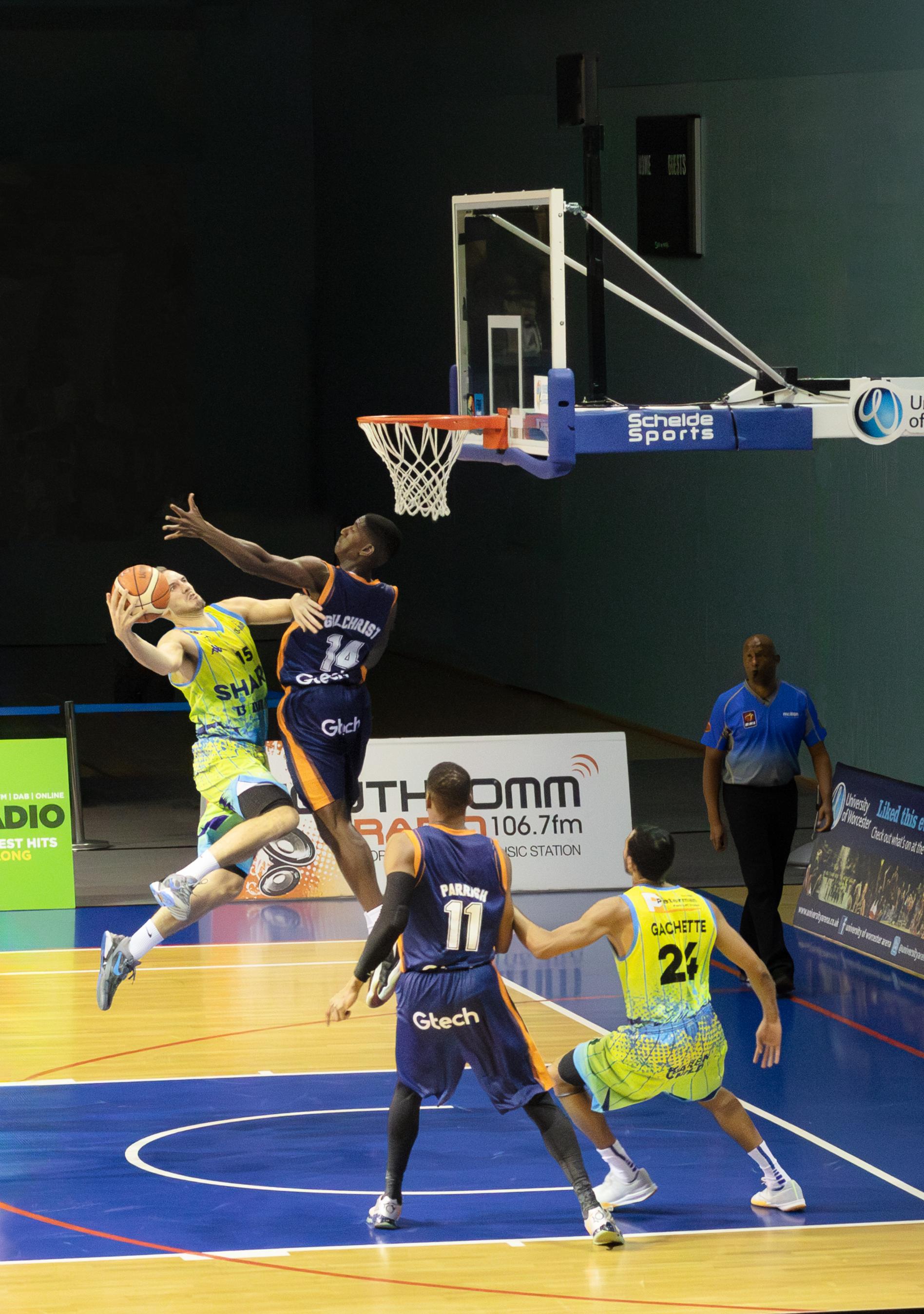
Find out how to start - or continue - your Distinctions journey:
Each of the pages below includes handy links to guidelines and genres for distinctions, assessment dates, and “how to apply” document:
• Licentiate (LRPS)– the process for LRPS is changing – see below for more details.
• Associate (ARPS)
• Fellowship (FRPS)
The LRPS application process has been changed and will now use an online application system for digital submissions – no more prints or books will be assessed.
There are currently no details of these new assessment procedures on the RPS website, but the new online process is still being developed, and will be announced as soon as it’s been tested successfully. Keep an eye out on the Facebook group (see below) for announcements. (ARPS and FRPS submissions will continue to support print-based assessments.)
The Photobook genre has its own special guidelines and submission process (as opposed to an ARPS or FRPS submission in book form). You can find out more here: Photo books. You might also like to see a talk hosted by Stewart Wall which is both informative and inspiring.
Some genre-specific hybrid Advisory Days for both Associate and Fellowship levels at RPS House are bookable – limited spaces; book here
To help you prepare, you can request a one2one portfolio review – an online session with a panel member appropriate to your genre/distinction. See this page for more information: How to book a one2one.
There has been some confusion over what happens next – someone from HQ will find you an advisor and put you both in touch to arrange a date and to send images/ presentation plan. This can take time depending on how many volunteer assessors in your genre or at your level are available, and you are advised to make your request at least 4 months before an assessment.
Some regions are offering Advisory Days online and in person. Look out on our Facebook group or for broadcasts from your regional group for details, or use this link https://portal.rps.org/s/ event-listing and click the ‘Advisory Day’ button at the top.
You can generally attend as an observer if you aren’t ready to step up yet (usually advertised a week beforehand on the Facebook group). In addition, some Chapters and Regions offer online Distinctions Study Groups. You can find these by searching the RPS website (these are in random date order including past dates, so you do need to be patient).
You can send your booking forms to distinctions@rps.org or by post to head office. As for advisory days, you can sign up to observe an Assessment Day (in person or online) tickets for assessments – currently free.
And don’t forget, as well as projected and printed images, you can also apply for a Film, Digital and Multimedia Distinction at any level, and also a written Research Distinction: Film And Research. The Research page on the website has been updated, and more changes are scheduled for other pages.
If you missed any of the Distinctions Live talks, you can catch up here. (Also accessible via the RPS Distinctions channel on YouTube.) This talk from Stewart Wall gives advice on how to gain your Licentiate.
The Facebook Group RPS Distinctions **Official Group** is still growing after 3 years, with over 5000 members. It includes news from HQ, links for observer places at assessments, and posts celebrating distinction successes to inspire you. It’s a civilised venue to ask questions, share your successes – and disappointments – and ask for critique or expert advice on your proposed portfolio.
If you aren’t sure which genre or level to apply for, you can post 6 images (plus your Statement of Intent if appropriate) and request moderator advice.
Accolade, which celebrates Digital Imaging members’ distinction successes, is useful for insight into the process in many different genres and at all levels. The last Issue 13 of Accolade has been published. Future distinction stories will be featured in DI ONLINE instead (back numbers also available on the DI Website).

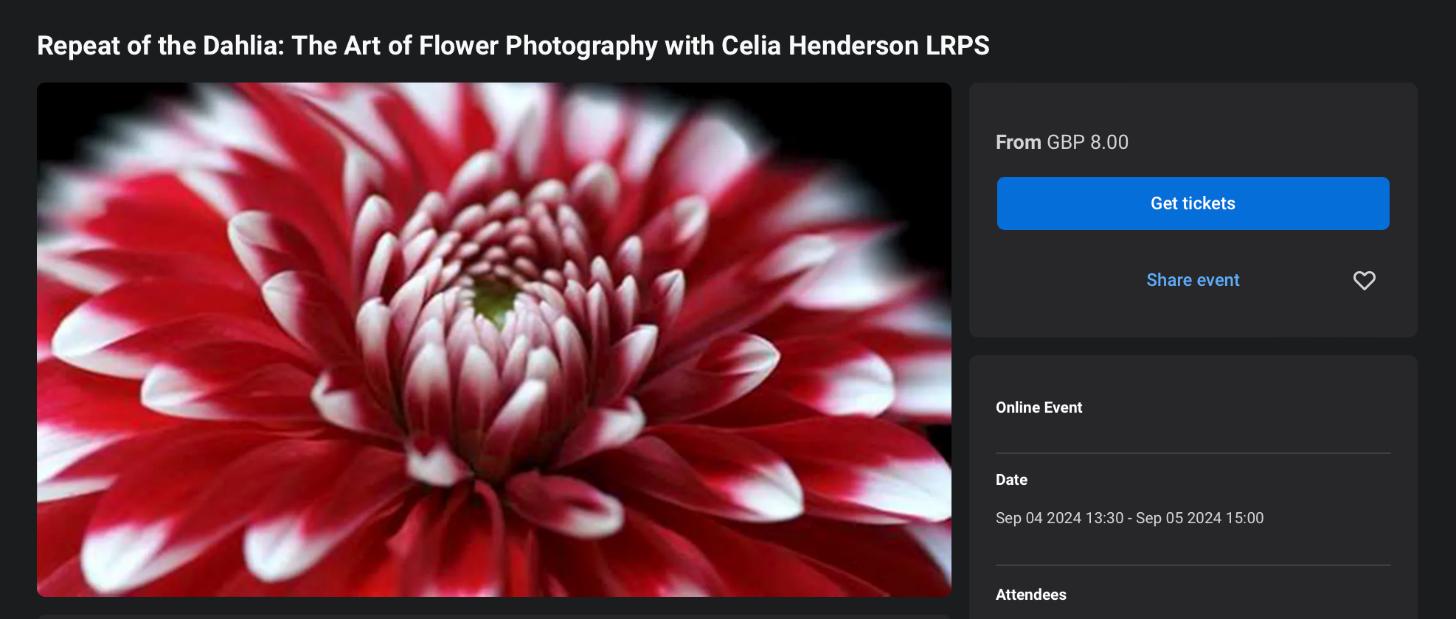
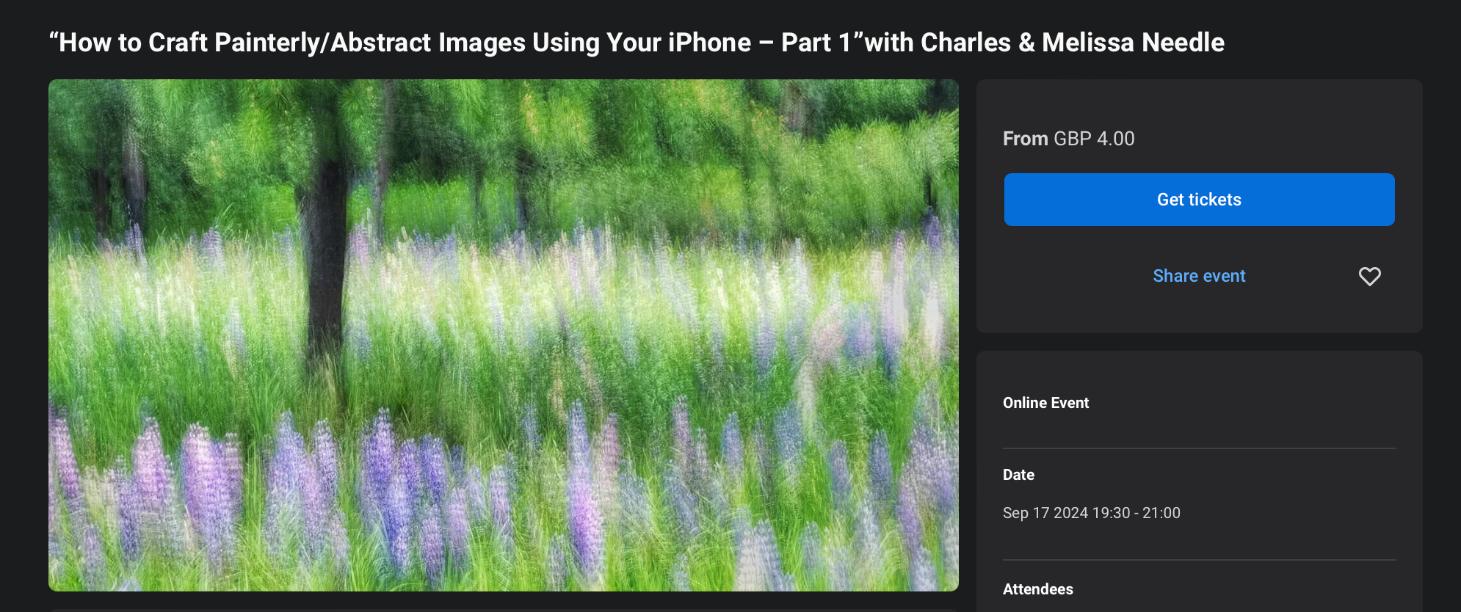


CLICK THE AD FOR DETAIL Composites and Ler’s Edit Workshops



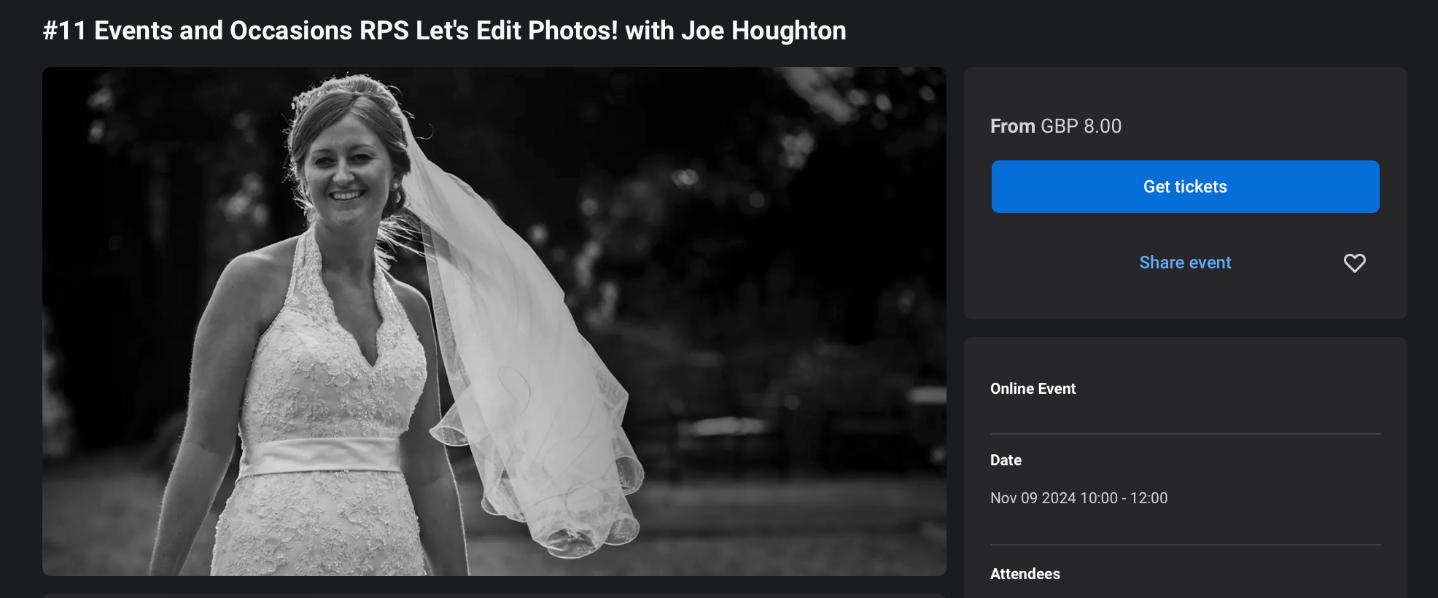



THE FINAL 2nd August 4pm FREE ENTRY

Summer beckons with its sunny days, blue skies, and calm seas. August is just around the corner, and I'm looking forward to a short break from my volunteer duties at DI. With many workshop facilitators taking August off, there will be fewer events over the next few weeks, and DI ONLINE won't be published again until September, so my workload is reduced. It's the perfect time to reflect and plan for the future.
As the workshop coordinator, I strive to create programmes that I think you'll enjoy, using formats that have worked in the past and covering topics I hope will interest you. However, your input is invaluable in shaping our offerings. That's why I will be excited to read the data from the DI survey mentioned on Page 5. It's your chance to tell us what you want and help guide new projects, talks, and workshops for 2025. Please take ten minutes to complete the survey—perhaps a bit longer if you add detail. Your feedback is crucial, so pour yourself a coffee and check a few boxes. Thank you!
I recently enjoyed a jaunt to London to visit a couple of Exhibitions, one being Wolfgang Strassl’s Portraits of the Underground, that I featured in May’s DI ONLINE. It was great to meet the artist in person and see the images in detail. Travelling on the tube will never be the nsame again! And I was gifted a signed book by Wolfgang.
And you just few days left to secure a place for the live talk on Saturday featuring Rad Drew , ‘Creating Infrared images with your iPhone”
Pressing the button to publish, send a broadcast email, or upload a series of workshops always fills me with trepidation. Despite thorough checks, oversights sometimes slip through—dates can get muddled or links broken. I get very annoyed with myself for any errors, especially those that can't be corrected. None of us are infallible, but just imagine how the software engineer who pressed the button for the CrowdStrike update must feel today. I hope they're receiving stress management support! I will chill in the sunshine and reduce my stress levels naturally and be ready for action again in September. I do hope you're checking the box. I read DI ONLINE cover to cover and really enjoy it!
Melanie Editor DI ONLINE
Do visit our webpage
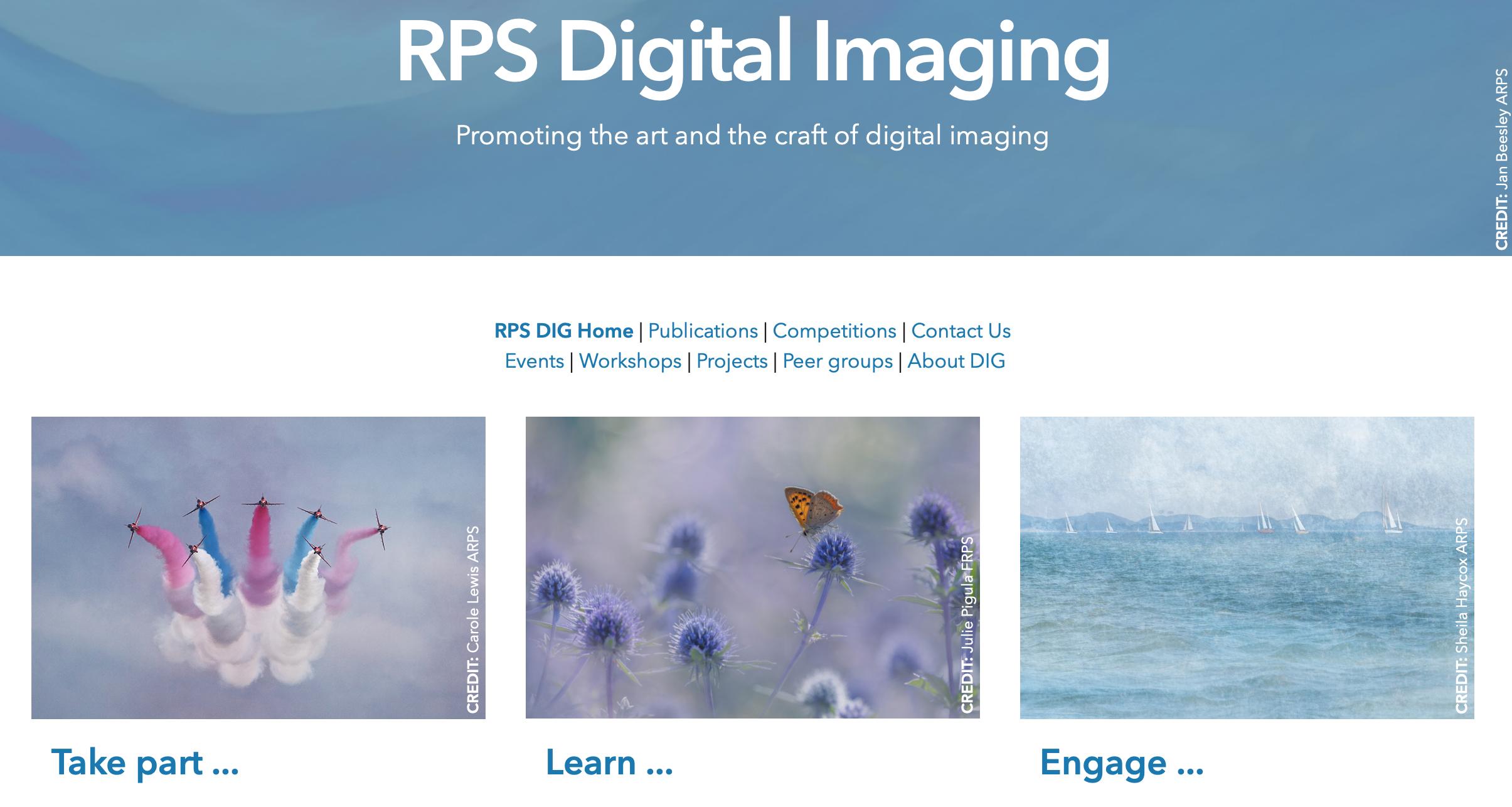
The members-only link for the DIGIT Archive is to be found in the email message announcing this newsletter.The RPS Digital Imaging constitution can be downloaded HERE. For everyone’s convenience, we include a list of shortcuts to the main Digital Imaging pages at the end of each Broadcast.
You can subscribe to our email Mailing Lists here to hear new announcements: Garden & Plant Photography Workshops Events DI Competition
